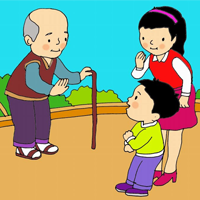Đề thi thử môn Anh THPT Quốc gia năm 2016 - Số 3 (Giải thích chi tiết Key)
Tài liệu luyện thi THPT Quốc gia Tiếng Anh - Đề thi đại học môn Tiếng Anh
Đề thi thử môn Anh THPT Quốc gia năm 2016 - Số 3 (Giải thích chi tiết Key) là tài liệu luyện thi THPT Quốc gia Tiếng Anh mới nhất và chuẩn nhất cho các em học sinh tham khảo cũng như rèn luyện làm đề. Thông qua đề thi thử tốt nghiệp môn Tiếng Anh này, hi vọng các em sẽ có kế hoạch ôn tập tốt nhất cho kì thi quan trọng này.
- Mark the letter A, B, C, or D on your answer sheet to show the underlined part that needs correction.
- 1. So extensive (A) the lakes are that they (B) are viewed as the (C) largest bodies (D) of fresh water in the world.Đáp án là A. the lakes are => are the lakes. Dùng đảo ngữ
- 2. The professor was (A) considering (B) postponing the examination until (C) the following week (D) because the students’ confusion.Đáp án là D. because => because of (+Noun)
- 3. Air pollution, together (A) with littering, (B) are causing (C) many problems (D) in our large, industrial cities today.Đáp án là B. are => is. Vì, chủ ngữ “Air pollution” là danh từ không đếm được
- 4. (A) Schools are (B) important and vital means (C) by which modern education (D) is provided.Đáp án là B. Bỏ important hoặc vital vì hai từ nghia tương đương nhau.
- 5. Manufacturers (A) may use food additives (B) for preserving, to color, or (C) to flavor, or to (D) fortify foods.Đáp án là B. for preserving => to preserve.
- Mark the letter A, B, C, or D on your answer sheet to indicate the word that is CLOSEST in meaning to the underlined part in each of the following questions.
- 6.They are going to suffer a lot of criticism for increasing bus fare by so much.suffer: chịu, trải qua => Đáp án là C.
Các đáp án khác: get into: vào trong; stand in with. vào hùa với, cấu kết với; put across thực hiện thành công. - 7.
He was one of the most outstanding performers at the live show last night.
Đáp án là D. outstanding: nổi bật, ấn tượng = impressive
Các từ còn lại: easy-looking: dễ nhìn; important: quan trọng; well- known: nổi tiếng
- Mark the letter A, B, C, or D on your answer sheet to indicate the word or phrase that is OPPOSITE in meaning to the underlined part in each of the following questions.
- 8.Because Jack defaulted on his loan, the bank took him to court.Đáp án là B. paid in full: trả hết>< default: vỡ nợ
- 9.
“The table is too heavy for me to move alone.”
Đáp án là A. heavy: nặng >< light: nhẹ - 10.
Polluted water and increased water temperatures have driven many species to the verge of extinction.
Đáp án là C. Polluted: bị ô nhiễm >< Purified: tinh khiết
Các từ còn lại: Enriched: được làm giàu; Contaminated: bị ô nhiễm; Strengthened: được làm cho mạnh
- Mark the letter A, B, C, or D on your answer sheet to indicate the word having the underlined part pronounced differently from the rest.
- 11.
Đáp án là C. Từ ethnic có phần gạch chân được phát âm là /θ/, các từ còn lại có phần gạch chân được phát âm là /ð/
- 12.Đáp án là C. Từ locate có phần gạch chân được phát âm là /eɪ/, các từ còn lại có phần gạch chân được phát âm là /æ/
- Mark the letter A, B, C, or D on your answer sheet to indicate the word having the different stress pattern from the rest.
- 13.Đáp án là C. Từ intimacy nhấn âm thứ nhất, các từ còn lại nhấn âm thứ hai.
- 14.Đáp án là B. Từ counselor nhấn âm thứ nhất, các từ còn lại nhấn âm thứ hai.
- 15.Đáp án là B. Từ policeman nhấn âm thứ hai, các từ còn lại nhấn âm thứ nhất.
- Mark the letter A, B, C or D on your answer sheet to indicate the correct answer to the following question.
- 16. Nancy can speak French ________ than Jimmy.
Đáp án là C. So sánh hơn với trang từ dài: …. more + adv+ than ….
- 17. We bought some _______.
Trật tự các tính từ: Option – size –shape – age – color –origin – material – purpose.
=> Đáp án là C. lovely - opinion; old –age; German – origin;
- 18. The meeting has been put _______ to Friday as so many people have got the flu.
Đáp án là D. put back: lùi lại
Các từ còn lại: put up: đưa lên, đặt lên; put in: đưa vào, xen vào; put out: thổi tắt, dập tắt
- 19. My uncle was _____ ill last summer; however, fortunately, he is now making a slow but steady recovery.Đáp án là A. seriously ill: ốm nặng
- 20. When a fire broke out in the Louvre, at least twenty _______ paintings were destroyed, including two by Picasso.
Đáp án là B. priceless: vô giá, không định đoạt được bằng giá cả, rất giá trị.
Các từ còn lại: worthless: vô giá trị, vô dụng ; worthy: có giá, đáng giá; valueless: không có giá trị, vô dụng
- 21. What ________ views do Americans and Asians have about love and marriage?
Đáp án là D. Từ cần điền là tính từ: traditional views: quan điểm truyền thống
Các từ còn lại: tradition (n): truyền thống; traditionally (adv): theo truyền thống; traditionalism (n): chủ nghĩa truyền thống
- 22. She asked me ______ I was looking at.
Đáp án là C. What + S + V. mệnh đề danh ngữ đóng vai trò như một danh từ
- 23. ______ his brother, Mike is active and friendly.Đáp án là B. Mệnh đề so sánh “ giống/ không giống …”: Like/ Unlike + N, S + V.
- 24. Daisy: “What an attractive hair style you have got, Mary!” - Mary: “_______”
What an attractive hair style you have got, Mary! – Đây là lời khen => Đáp án là C. Thank you for your compliment! – Cám ơn lời khen của bạn
Các đáp án khác không hợp ngữ cảnh:
A. Cám ơn bạn rất nhiều, Tôi e sợ.
B. Bạn đang nói dối.
D. Tôi không thích lời nói của bạn.
- 24. Daisy: “What an attractive hair style you have got, Mary!” - Mary: “_______”
What an attractive hair style you have got, Mary! – Đây là lời khen => Đáp án là C. Thank you for your compliment! – Cám ơn lời khen của bạn
Các đáp án khác không hợp ngữ cảnh:
A. Cám ơn bạn rất nhiều, Tôi e sợ.
B. Bạn đang nói dối.
D. Tôi không thích lời nói của bạn.
- 25. The train will be leaving in five minutes so you _________ better hurry up.Đáp án là A. had better + V = should + V: nên làm gì
- 26. Dick: “Sorry, Brian is not here.” - Peter: “_________”
Đây là cuộc trò chuyện qua điện thoại.
Dick: Rất tiếc, Brian không có ở đây. => Đáp án là C. Tôi có thể để lại lời nhắn không? Câu "Can I leave a message?" khi người gọi muốn để lại lời nhắn cho người không có mặt ở đó.
Còn , "Can I take a message?" là ý chỉ rằng "Tôi có thể ghi lại lời nhắn giùm được hay không?" – thường là câu nói của người nghe, khi người trung gian không có mặt ở đó.
- 27. She made a list of what to do ______ forget anything.
Các cấu trúc chỉ mục đích:
In order (not) to + V
So as ( not ) to + V
So that + clause
Trường hợp này chọn đáp án là B. Dịch: cô ấy đã lập một danh sách những việc phải làm để không quên bất kỳ việc nào.
- 28. I can’t ______ this noise any longer. I’m going to write a letter of complaint about this problem.
Đáp án là C. put up with: chịu đựng
Các đáp án khác:
A: take sth away from sth: lấy đi/ trừ đi cái này từ cái kia => loại câu này vì sau “take” không có sth
C. get back to: trở lại, bắt đầu lại
D. make out of: làm từ
- 29. Members of my family share the ______.
Đáp án là D. housework: công việc nhà. Dịch: Các thành viên trong gia đình thường chia sẻ công việc nhà.
Các từ còn lại: housewife: bà nội trợ; hometown: quê hương; homework: bài tập về nhà
- 30. Tom said that he ________ his motorbike the day before.Đáp án là A. Câu gián tiếp, ta phải lùi thì, “the day before” là biến đổi của “yesterday” => câu trực tiếp chia thì quá khứ đơn giản, lùi thì thành quá khứ hoàn thành.
- 31. “Don’t worry about your necklace. Give it to me and I promise to ______ great care of it.”Đáp án là B. take care of: chăm sóc, trông nom
- 32. We are worried ________ the current situation of environmental pollution in our country.Đáp án là B. be worried about: lo lắng về…
- 33. In Vietnam, two or more __________ may live in a home.
Đáp án là A. generations: các thế hệ
Các từ còn lại: generous (adj): rộng lượng; generalization: sự tổng quát hóa; generator: người sinh ra, người tạo ra
- 34. If you want your son to do better on his exams, I suggest he ________ harder.
Đáp án là D. Cấu trúc gợi ý: S + suggest + that + S1 + V (bare – inf).
- Read the following passage and mark the letter A, B, C, or D on your answer sheet to indicate the correct answer to each of the questions.
Scientists do not yet thoroughly understand just how the body of an individual becomes sensitive to a substance that is harmless or even wholesome for the average person. Milk, wheat, and egg, for example, rank among the most healthful and widely used foods. Yet these foods can cause persons sensitive to them to suffer greatly. At first, the body of the individual is not harmed by coming into contact with the substance. After a varying interval of time, usually longer than a few weeks, the body becomes sensitive to it, and an allergy has begun to develop. Sometimes it's hard to figure out if you have a food allergy, since it can show up so many different ways. Your symptoms could be caused by many other problems. You may have rashes, hives, joint pains mimicking arthritis, headaches, irritability, or depression. The most common food allergies are to milk, eggs, seafood, wheat, nuts, seeds, chocolate, oranges, and tomatoes. Many of these allergies will not develop if these foods are not fed to an infant until her or his intestines mature at around seven months. Breast milk also tends to be protective. Migraines can be set off by foods containing tyramine, phenathylamine, monosodium glutamate, or sodium nitrate. Common foods which contain these are chocolate, aged cheeses, sour cream, red wine, pickled herring, chicken livers, avocados, ripe bananas, cured meats, many Oriental and prepared foods (read the labels!). Some people have been successful in treating their migraines with supplements of B-vitamins, particularly B6 and niacin. Children who are hyperactive may benefit from eliminating food additives, especially colorings, and foods high in salicylates from their diets. A few of these are almonds, green peppers, peaches, tea, grapes. This is the diet made popular by Benjamin Feingold, who has written the book “Why your Child is Hyperactive”. Other researchers have had mixed results when testing whether the diet is effective. - 35. The topic of this passage is _______________.
Đáp án là A. những phản ứng của thức ăn. Đọc bài, sẽ dễ dàng thấy những supporting idea cho topc này.
- Milk, wheat, and egg, for example, rank among the most healthful and widely used foods. Yet these foods can cause persons sensitive to them to suffer greatly.
- Your symptoms could be caused by many other problems. You may have rashes, hives, joint pains mimicking arthritis, headaches, irritability, or depression.
- Migraines can be set off by foods containing tyramine, phenathylamine, monosodium glutamate, or sodium nitrate.
- 36. According to the passage, the difficulty in diagnosing allergies to foods is due to ___________.Đáp án là C. Ý trong bài: Sometimes it's hard to figure out if you have a food allergy, since it can show up so many different ways.
- 37. The word "symptoms" is closest in meaning to ___________.
Đáp án là A. symptoms = indications: dấu hiệu, biểu hiện
Các từ còn lại: diet: chế độ ăn kiêng; diagnosis: sự chuẩn đoán; prescription: đơn thuốc
- 38. The phrase "set off" is closest in meaning to ___________.
Đáp án là D. triggered = set off: được gây ra
Các động từ còn lại: relieved: được làm yên lòng; identified: được xác định; avoided: được tránh
- 39. What can be inferred about babies from this passage?Đáp án là B. Ý trong bài: Children who are hyperactive (hiếu động thái quá) may benefit from eliminating food additives, especially colorings, and foods high in salicylates from their diets.
- 40. The word "hyperactive" is closest in meaning to ___________.
hyperactive : hiếu động thái quá => Đáp án là A.
Các đáp án khác: B. Các hoạt động chậm, không bình thường; C. thú vị; D. inquisitive: tò mò, tọc mạch
- 41. The author states that the reason that infants need to avoid certain foods related to allergies has to do with the infant's ___________.Đáp án là C. Ý trong bài: Many of these allergies will not develop if these foods are not fed to an infant until her or his intestines mature at around seven months.
- 42. The word "these" refers to ___________.Đáp án là D. Ý trong bài: Children who are hyperactive may benefit from eliminating food additives, especially colorings, and foods high in salicylates from their diets. A few of these are almonds, green peppers, peaches, tea, grapes.
- 43. Which of the following was a suggested treatment for migraines in the passage?Đáp án là D. Ý trong bài: Some people have been successful in treating their migraines with supplements of B-vitamins, particularly B6 and niacin.
- 44. According to the article the Feingold diet is NOT ___________.
Đáp án là A. Ý trong bài: Ý trong bài: This is the diet made popular by Benjamin Feingold, who has written the book “Why your Child is Hyperactive”. Other researchers have had mixed results when testing whether the diet is effective.
- Read the following passage and mark the letter A, B, C or D on your answer sheet to indicate the correct word for each of the blanks.
Reference books are not designed to be read from the first page to the last but rather to be consulted to answer the questions and provide both general and specific pieces of information.One of the most (45) _______-used reference books is a dictionary, which provides information about words. It lists meanings and spellings, (46) _______ how a word is pronounced, gives (47) _______of how it is used, may reveal its origins and also lists synonyms and (48) _______. To help you find the words faster, there are guide words at the top of each page showing the first and last words on that page and of course it (49) _______ to know the alphabet!There may be numerous special sections at the back with (50) _______ about famous people and places, lists of dates and scientific names, etc. There is usually a section at the front (51) _______ how to use the dictionary, which includes the special abbreviations or signs.An atlas is also a reference book and (52) _______ charts, tables and geographical facts, as well as maps. Political maps locate countries and cities, physical maps show the formation of the land with its mountains and valleys, and economic maps show industries and agriculture. To find a specific place, you need to look in the (53) _______ at the back of the atlas and the exact position on the map. There are numerous map (54) _______ that you need to know in order to be able to read a map-almost like a special language-and these are explained at the front of the atlas. - 45.
Đáp án là C. widely – used: được sử dụng rỗng rãi
Các từ còn lại: greatly: một các tuyệt vời; mainly: chính; largely: rộng (về diện tích, đo lường)
- 46.
Đáp án là B. tell : nói (thường theo sau là tân ngữ)
Các từ còn lại không dùng được:
Give something to someone/ give someone something: đưa cái gì cho ai
Say: thường dùng để trân thuật lại lời nói của ai đó.
Speak (to someone): nói chuyện với ai
- 47.
Đáp án là C. examples: những ví dụ. Dịch: gives examples of how it is used: đưa ra những ví dụ nó được sử dụng như thế nào.
Các từ còn lại: evidence: dẫn chứng, roof: bằng chứng; cases: các trường hợp
- 48.
Đáp án là A. synonyms and antonyms: từ đồng nghĩa và trái nghĩa
- 49.
Đáp án là C. help to know: giúp để biết
Các động từ còn lại:
Assist someone in/with something: giúp đỡ ai về…
Pay for: trả (tiền) cho …
Work: làm việc
- 50.
Đáp án là C. with facts about: với những thực tế về…
Các từ còn lại: event: sự kiện; story: câu chuyện; material: vật chất
- 51.
Đáp án là A. explain : giải thích (bằng miệng) Dịch: explain how to use a dictionary: giải thích cách sử dụng một cuốn tử điển
Các từ còn lại: interprete: làm sáng tỏ; suggest: gợi ý; present: trình bày - 52.
Đáp án là D. contain: bao gồm… (mang nghĩa bao hàm, chứa đựng)
Các từ còn lại: compose và consist thường theo sau là giới từ “of”, include: gồm (mang nghĩa có liên quan)
- 53.
Đáp án là D. index: danh mục các tên hoặc vấn đề được nói đến trong một quyển sách
Các từ còn lại: foreword: lời giới thiệu ngắn gọ cho một cuốn sách; preface: lời giới thiệu ở đầu cuốn sách; complement: phần bổ sung
- 54.Đáp án là D. map symbol: biểu tương trong bản đồ
Các từ còn lại: mark: điểm; sign: dấu hiệu; signal: dấu hiệu - Read the following passage and mark the letter A, B, C, or D on your answer sheet to indicate the correct answer to each of the questions.
Iron production was revolutionized in the early eighteenth century when coke was first used instead of charcoal for refining iron ore. Previously the poor quality of the iron had restricted its use in architecture to items such as chains and tie bars for supporting arches, vaults, and walls. With the improvement in refining ore, it was now possible to make cast-iron beams, columns, and girders. During the nineteenth century further advances were made, notably Bessemer's process for converting iron into steel, which made the material more commercially viable.Iron was rapidly adopted for the construction of bridges, because its strength was far greater than that of stone or timber, but its use in the architecture of buildings developed more slowly. By 1800 a complete internal iron skeleton for buildings had been developed in industrial architecture replacing traditional timber beams, but it generally remained concealed. Apart from its low cost, the appeal of iron as a building material lay in its strength, its resistance to fire, and its potential to span vast areas. As a result, iron became increasingly popular as a structural material for more traditional styles of architecture during the nineteenth century, but it was invariably concealed.Significantly, the use of exposed iron occurred mainly in the new building types spawned by the Industrial Revolution: in factories, warehouses, commercial offices, exhibition hall, and railroad stations, where its practical advantages far outweighed its lack of status. Designers of the railroad stations of the new age explored the potential of iron, covering huge areas with spans that surpassed the great vaults of medieval churches and cathedrals. Paxton's Crystal Palace, designed to house the Great Exhibition of 1851, covered an area of 1.848 feet by 408 feet in prefabricated units of glass set in iron frames. The Paris Exhibition of 1889 included both the widest span and the greatest height achieved so far with the Halle Des Machines, spanning 362 feet, and the Eiffel Tower 1,000 feet high. However, these achievements were mocked by the artistic elite of Paris as expensive and ugly follies. Iron, despite its structural advantages, had little aesthetic status. The use of an exposed iron structure in the more traditional styles of architecture was slower to develop. - 55. What does the passage mainly discuss?Đáp án là D. Topic sentence: Iron production was revolutionized in the early eighteenth century when coke was first used instead of charcoal for refining iron ore.
- 56. The word "revolutionized" is closest in meaning to _______.
revolutionize: được cách mạng hóa -> Đáp án gần nghĩa nhất là C. dramatically changed: được thay đổi đột ngột
A. bắt đầu nhanh chóng; B. được mở dần dần; carefully examined: được kiểm tra cẩn thận
- 57. According to the passage, iron was NOT used for beams, columns, and girders prior to the early eighteenth century because _______.Đáp án là D: Ý trong bài: Previously the poor quality of the iron had restricted its use in architecture to items such as chains and tie bars for supporting arches, vaults, and walls. With the improvement in refining ore, it was now possible to make cast-iron beams, columns, and girders.
- 58. Iron replaced stone and timber in the building of bridges because iron was considered ______.Đáp án là C. Ý trong bài: Iron was rapidly adopted for the construction of bridges, because its strength was far greater than that of stone or timber,….
- 59. The word "it" refers to _________.Đáp án là B. it = internal iron skeleton, hai vế câu tương phản, đồng chủ ngữ
- 60. The word "surpassed" is closest in meaning to _______.
surpass: hơn, vượt trội => Đáp án là B. exceed: vượt quá
Các từ còn lại: imitate: làm giả; approach: tiếp cận; include: bao gồm
- 61. According to paragraph 3, the architectural significance of the Halle Des Machines was its _______.Đáp án là A. The Paris Exhibition of 1889 included both the widest span and the greatest height achieved so far with the Halle Des Machines, spanning 362 feet, and the Eiffel Tower 1,000 feet high.
- 62. How did the artistic elite mentioned in the passage react to the buildings at the Paris Exhibition?Đáp án là B. Những câu thể hiện ý chế nhạo: these achievements were mocked (bắt chước) by the artistic elite of Paris as expensive and ugly follies…..
- 62. How did the artistic elite mentioned in the passage react to the buildings at the Paris Exhibition?Đáp án là B. Những câu thể hiện ý chế nhạo: these achievements were mocked (bắt chước) by the artistic elite of Paris as expensive and ugly follies…..
- 63. It can be inferred that the delayed use of exposed iron structures in traditional styles of architecture is best explained by the _______.
Đáp án là D. Dựa vào hai câu cuối trong bài: Iron, despite its structural advantages, had little aesthetic status. The use of an exposed iron structure in the more traditional styles of architecture was slower to develop.
- 64. The paragraph following the passage most probably discusses _______.
Đáp án là D. Đọc bài có thể thấy, iron dần thay thế stone and timber:
- Iron was rapidly adopted for the construction of bridges, because its strength was far greater than that of stone or timber,
- Significantly, the use of exposed iron occurred mainly in the new building types spawned by the Industrial Revolution: in factories, warehouses ….
- B. Phần viết:
- Part I. Finish each of the following sentences in such a way that it means the same as the sentence printed before it.
- 65. It wasn’t necessary for you to buy so many chips as you did.=> You needn’t .....................................................................................have bought so many chips
- 66. Much as he tried hard, he didn’t succeed in installing the software.
=> However ....................................................................................................
hard he tried, he didn't succeed in installing the software - 67. He lost his job because he was very lazy.
=> But ...........................................................................................
for his laziness, he wouldn't have lost his job for being lazy, he wouldn't have lost his job - 68. It was not until midnight that he could finish his homework.=> Not until ...........................................................................................midnight could he finish his homework
- 69. If only I hadn’t bought the secondhand motorbike.=> I regret .....................................................................................buying the secondhand motorbike having bought the secondhand mortorbike
- Part II. In about 140 words, write a paragraph about why is it important to protect our environment? What should we do to fulfill this task?
Bài viết tham khảo:
Environment contains water, soil, air, which are necessary to all of the livings. Therefore, we are trying to find solutions to environmental pollution. People should stop cutting trees for timber instead of planting trees and forests. Besides, people should reduce using cars, motorbikes that cause noise and air pollution. The next measure is that we should prevent farmers from using fertilizers and pesticides that damage soil. In addition, people should not leave litter on land and in water and we should prohibit factories from dumping industrial waste into rivers and lakes. It is high time governments had suitable measures that require companies, as well as individuals, to stop cutting down and polluting activities.
- Đáp án đúng của hệ thống
- Trả lời đúng của bạn
- Trả lời sai của bạn








